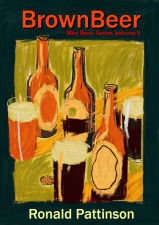Any guesses what the recipe is? Yes, it’s a mix of four pale malts and an unknown type of sugar. Exactly the same as all the Mild Ales. With the one difference that the proportion of sugar is slightly higher.
Slightly different hops this time. Three English types all from the 1899 season. Along with a tiny amount of Hallertau from 1900.
No ageing for this beer. Though it may well have been blended with an aged beer.
| 1901 Truman (Burton) No. L5 R | ||
| pale malt | 15.75 lb | 95.45% |
| No. 2 sugar | 0.75 lb | 4.55% |
| Fuggles 150 mins | 2.00 oz | |
| Fuggles 60 mins | 2.00 oz | |
| Fuggles 30 mins | 1.875 oz | |
| Hallertau 30 mins | 0.125 oz | |
| OG | 1074 | |
| FG | 1020.5 | |
| ABV | 7.08 | |
| Apparent attenuation | 72.30% | |
| IBU | 63 | |
| SRM | 7 | |
| Mash at | 151º F | |
| Sparge at | 170º F | |
| Boil time | 150 minutes | |
| pitching temp | 56º F | |
| Yeast | WLP013 London Ale (Worthington White Shield) | |











































































3 comments:
72% attenuation, pale malts, 7% a.b.v., (possibly) sold as a running ale... by God, people were pissheads back then! If you brewed that today you'd put it in a nip bottle and sell it at Christmas. The wartime restrictions on beer would have been a bit of a blow to 2020s drinking habits, but in 1914 it must have seemed like the end of the world - or at least the end of boozing.
No wonder the temperance movement was at its strongest then. Of course people had fun getting around the stupid laws they got into the statute books.
I wonder if people spread their drinking out over the week more often and took more time on average with a pint.
There is an Irish brewery who offer an 8% imperial stout in 500ml bottles.
That solves the mystery of what R stands for in a number of these of these 1901 Truman ales. Thought it stood for ready.
Oscar
Post a Comment